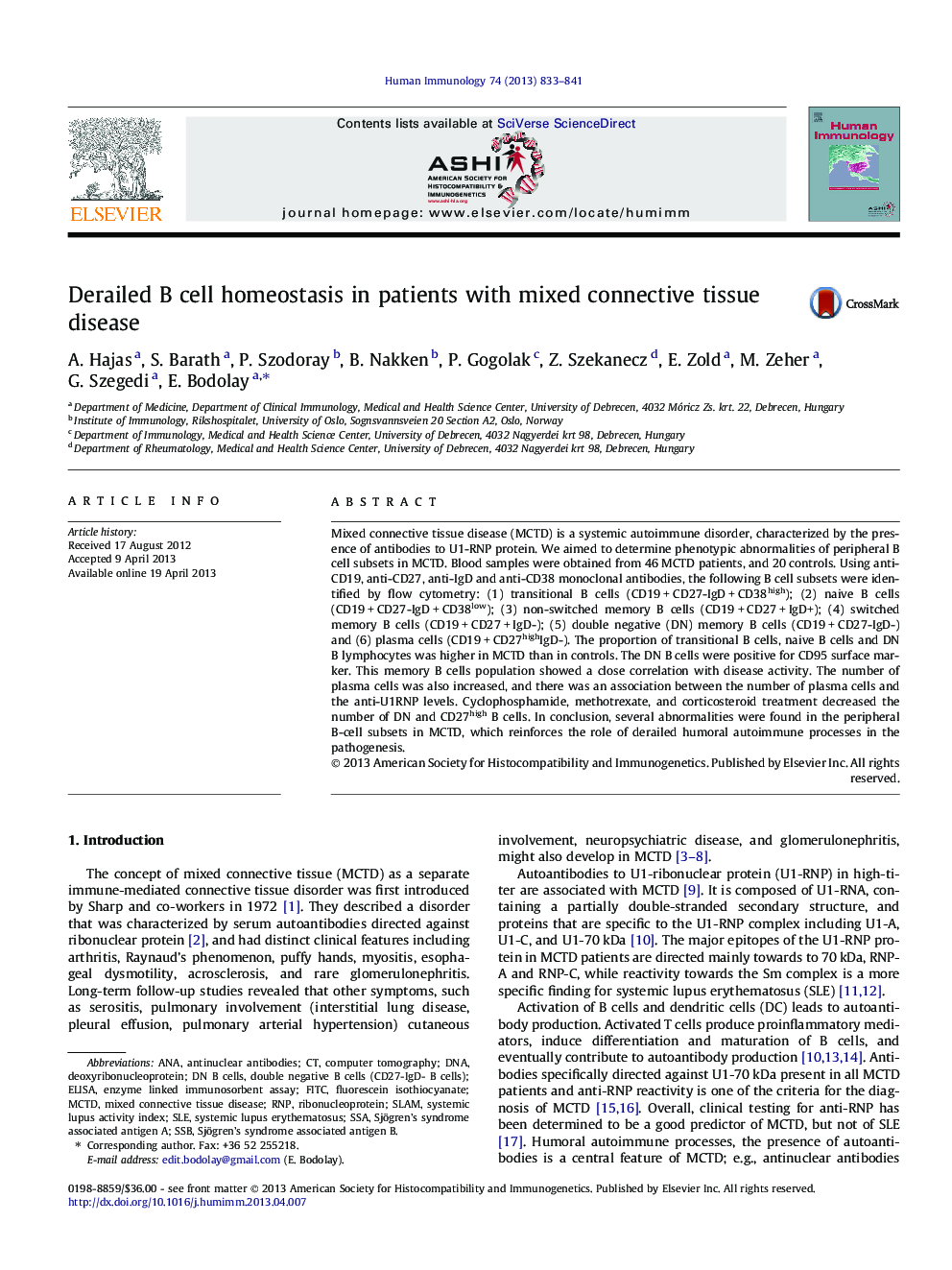| Article ID | Journal | Published Year | Pages | File Type |
|---|---|---|---|---|
| 3350968 | Human Immunology | 2013 | 9 Pages |
Mixed connective tissue disease (MCTD) is a systemic autoimmune disorder, characterized by the presence of antibodies to U1-RNP protein. We aimed to determine phenotypic abnormalities of peripheral B cell subsets in MCTD. Blood samples were obtained from 46 MCTD patients, and 20 controls. Using anti-CD19, anti-CD27, anti-IgD and anti-CD38 monoclonal antibodies, the following B cell subsets were identified by flow cytometry: (1) transitional B cells (CD19 + CD27-IgD + CD38high); (2) naive B cells (CD19 + CD27-IgD + CD38low); (3) non-switched memory B cells (CD19 + CD27 + IgD+); (4) switched memory B cells (CD19 + CD27 + IgD-); (5) double negative (DN) memory B cells (CD19 + CD27-IgD-) and (6) plasma cells (CD19 + CD27highIgD-). The proportion of transitional B cells, naive B cells and DN B lymphocytes was higher in MCTD than in controls. The DN B cells were positive for CD95 surface marker. This memory B cells population showed a close correlation with disease activity. The number of plasma cells was also increased, and there was an association between the number of plasma cells and the anti-U1RNP levels. Cyclophosphamide, methotrexate, and corticosteroid treatment decreased the number of DN and CD27high B cells. In conclusion, several abnormalities were found in the peripheral B-cell subsets in MCTD, which reinforces the role of derailed humoral autoimmune processes in the pathogenesis.
